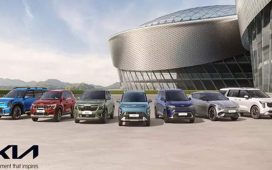Let’s discuss reader comments to one of my recent articles regarding Electric Vehicles.

Electric Vehicles for Everyone?
On July 19, I asked Electric Vehicles for Everyone? If the Dream Was Met, Would it Help the Environment?
Here are some responses.
James and Adele Noetzelman – Electric Grid Needs
Best article on EVs I’ve read in a while. Interestingly, as an Engineer, I did my own calculations and appreciate how this article addresses issues that most EV advocates won’t even consider, that is a brand new electrical grid and massive generation increase. I calculated a need of almost double the existing capacity and the article mentions 50% increase. Either way it is massive. The other calculation that typically isn’t mentioned in EV circles is that the estimated range will downgrade considerably as time moves forward. Even now, battery replacement is problematic as new battery tech along with layouts are causing a real issue in getting replacement ones. Finally, it is estimated that to mine the materials needed JUST FOR THE BATTERY is in the neighborhood of 50,000 miles of equivalent ICE driving. That doesn’t include the ecological disaster we are advocating in the name of reducing CO2 mining all these minerals, done of course outside the US with no environmental controls.
Portlander – What’s the Alternative?
Well, Mish, the Manhattan Institute is hardly going to give you a balanced report on this topic. And I know you appreciate balance!
This report is full of “don’t knows” about this and that. I would agree that saying, as a certain fact, that universal EVs will be “good for the environment” is “nonsense,” to use your term. We can’t be certain of that.
What’s your alternative: continuing with the status quo? Drill baby drill?
Mish Reply to Portlander
What’s wrong with “I don’t know?”
Then factor in the guaranteed massive costs just to get “perhaps”.
Then speed up the timeline so it’s virtually impossible for the necessary infrastructure to be ready.Finally, please note that China will be adding coal-fired plants up until 2030 to produce electricity for the EVs it produces!
My alternative, as always, is easy to state. Let the free market pick winners, not politicians.
Ad Hominem attacks like this “Well, Mish, the Manhattan Institute …” indicate a lack of good rebuttal.
Vooch – Ride a Bike
My BEV has a 500 watt battery that takes me around 80 miles, depending on hills and headwinds. I charge at home in about 4 hours. I ‘drive’ it around 500 miles/month in a climate similar to Vermont. cost me $1,200 used. Its a Pedal assist e-bike. 🙂
I live car free. Its liberating. Once you go car free you never go back.
Mish Reply to Vooch
If you don’t go anywhere or do anything, yep, you don’t need a car. Is that the forced goal?
Jeff Green – University of Michigan Study
I’m not buying the article’s premiss. Once you are running a society on renewable energy, ICE vehicles just can’t cut it.
The good news: whereas these studies have arrived at varying emission figures, they have invariably found that the greenhouse-gas emission difference caused by the carbon-intensive production of BEVs vs. ICE vehicles is virtually erased in the first few years of an EVs life.
In one such study conducted by the University of Michigan, it takes 1.4 to 1.5 years for EV sedans to erase the pollution advantage of ICE vehicles due to the manufacturing process; 1.6 to 1.9 years for S.U.V.s and about 1.6 years for pickup trucks. These numbers are based on the average number of vehicle miles driven in the United States.
Mish Reply to Jeff Green
Such studies do not include downstream costs.
For starters most minerals are mined and/or refined in China, using diesel to mine and coal to refine. China is still adding coal-fired plants. And what about the infrastructure costs including the necessary minerals. None of that is properly factored in to fluff pronouncements.
Papa Dave On Unknowns
Decent article Mish. Lots of unknowns going forward.
EVs are one small piece in a very large and complex energy transition puzzle that most of the world is attempting this century. Which means that even if we could snap our fingers today and replace every personal ICE vehicle with an EV for personal transportation, it certainly wouldn’t solve the global warming and climate change problem by itself.
Transportation accounts for just 20% of global manmade CO2 emissions. Road transport is 75% of that 20%, or just 15% of CO2 emissions. So replacing every road transport ICE vehicle with an EV version could “possibly” reduce CO2 emissions by up to 15%. As your article correctly pointed out, even if we save 15% here, there are other emissions associated with the production of everything that goes into EVs that offset some of that saving.
And of course, CO2 is not the only GHG to worry about. Lots of CH4 as well. And then there are those manmade “forever” chemicals which are small in volume but tens of thousands of times worse than CO2 and CH4.
Sadly, there is way too much focus on EVs when it comes to solutions to our global warming problem. And the problem keeps getting worse as time goes on. 2023 is likely going to be the warmest year since we started keeping records 150 years ago. 2024 likely to be even worse, given the strengthening El NIno adding a little extra warmth.
Which means that there will continue to be pressure on the fossil fuel industry to cut back or shut down. Which will lead them to further reduce E&P spending. Which will tighten supplies. All while demand for fossil fuels keeps increasing every year. Which means higher prices and bigger profits for the oil and gas industry. Which is why I am staying long on oil and gas companies for the rest of this decade.
Jeff Green : On Recycling
Future material recycling will be done more and more with clean energy. Which is now on par or cheaper than fossil fuels. Fossil fuels will continually get more expensive while renewable energy is still looking for its bottom cheapest price.
Mish Reply to Jeff Green
The Manhattan Institute article I linked to addressed this issue.
“Recycling: Recycling will be irrelevant for a long time, as far as mitigating upstream minerals demands. Since manufacturers claim that EV batteries will last a decade, that means that there won’t be much of anything available to begin recycling until the early 2030s. The best that IEA could come up with is recycled minerals meeting 1%–2% of battery demand by 2030. As for the following decades, enthusiasts’ unrealistic dream of perfect recycling, even were it feasible, would still leave the need for an astronomical rise in overall minerals supplied.”
Papa Dave
Population growth is part of the problem but its actually a very small part. The elephant in the room is economic growth which leads to increased standards of living, which results in demand for ever more energy and other resources.
The third world is not the problem. Its the developed world that is the problem. We consume enormous quantities of energy and resources in our quest of more economic growth and higher standards of living; hundreds or thousands of times per capita, compared to the third world.
Of course, those in the third world desperately desire to have a better standard of living as well; reliable electricity, adequate food and clean water to start with.
You can’t improve the lives of humans without more energy. So we are going to be using more and more energy every year as far as you can look forward.
Mr. Mark – Peak Copper
The increased load on our ageing grids is something that is seldom discussed but a very real problem.
Another poster correctly stated that the amount of copper needed will be greater than the amount that has been mined in all of history. It appears that we will reach peak copper in the next few years so this remains an issue.
Operating mines currently have an average grade of 0.53% while copper projects under development have an average grade of 0.39%.
The estimated total resource of copper projects in the pipeline are 106B tonnes, half the current resource total of existing mines.
“Miners are struggling with both lower grades and increasing operating costs,” says Leinart.
“Lower grades mean moving more rocks which in turn will require more diesel fuel and explosives, making the metal more expensive to produce.”
Steve – Mining Lead Times and Recycling
Mines today typically require a 15 year timeline from discovery to startup, and that is very generous! To get enough finished raw materials just for EV’s would take decades at ever-increasing capital/operating costs. That is provided that enough metals have actually been discovered now!! This issue alone makes the EV issue problematic. I won’t even mention the material recycle component that would be mandatory for adequate metal needs in the future.
Stephen Neumeier – China Coal Question
Should we assume that the amount of coal China uses today will remain the same in 10 or 20 years?
Mish Reply to Stephen Neumeier
It could be more or less. But we are very confident it will be higher until 2030. Meanwhile, what might ICE or hybrid technology do if that was the focus?
Jeff Green on China and Coal
China has plans to go full renewables. Eventually the coal will go.
Mish Reply to Jeff Green
What a hoot. Do you believe everything China says? The only way coal goes away in China is if China produces enough nuclear energy. There is roughly a 0.0 percent chance China gets all of it energy from renewables.
Bobby – Key Point on Truck Weight
As we look towards the future and the increasingly widespread adoption of EVs, it’s important to consider the substantial strain this transition could place on our interstate road system. The introduction and growth of EVs, especially heavier models like the Ford Lightning, Rivian R1T, and the GMC Hummer EV truck, present an overlooked issue that could have significant consequences for our infrastructure.
For one, these larger EVs, propelled by weighty batteries, weigh between two and three times more than standard compact cars. Studies show that the average EV exerts 2.24 times more stress on roads compared to a similar gas vehicle and 1.95 times more stress than a diesel vehicle. This extra strain is particularly pronounced for larger EVs, which can cause up to 2.32 times more damage to road infrastructure compared to their non-electric counterparts.
The significant weight increase leads to accelerated road wear and tear, reducing the lifespan of our roads. Roads and bridges are designed for a specific lifespan, typically 20 years for roads and 30-50 years for bridges. However, the stress caused by EVs can cause them to degrade faster, leading to more frequent and costly repairs.
The heavier weight of EVs could exacerbate existing problems such as potholes and aging bridges. The increased asphalt movement resulting from the extra weight causes small cracks that can grow into larger, problematic issues. This could lead to a potentially crippling financial burden.
While the shift towards EVs may seem like a positive step in terms of environmental sustainability, it’s important to take a comprehensive look at the impact of this transition. Road planners and policymakers need to reassess existing standards and make provisions for the strain battery-electric vehicles place on the road infrastructure. If this factor is overlooked, the widespread adoption of EVs could lead to an increase in road degradation and maintenance costs, disrupting the transportation system and causing significant unforeseen expenses.
Mish Reply on Truck Weight
Thanks!
That ‘s an excellent set of comments that I have not seen elsewhere.
Twitter Debate
McKinsey Silliness
McKinsey: “Assuming the global push toward decarbonizing electricity grids continues, including in China…” What a hoot and one of the things Manhattan Institute warns about.
Measuring Emissions
Reflections on Uncertainty and Assumptions
Lennart objects to Mills discussion on uncertainty. But the uncertainty exists precisely because we do not know what countries will produce and refine the minerals, and how.
McKinsey’s fluff article states “”Assuming the global push toward decarbonizing electricity grids continues, including in China…”
That’s one hell of an assumption. But one of my reader’s replies is even more preposterous “China has plans to go full renewables.”
OK. If you make that assumption, and assume 100% recycling, and a plunge in mine lead times, and storage breakthroughs to make wind and solar work at night and when the wind doesn’t blow, yeah, maybe it works as long as you also assume a sufficient investment in global infrastructure.
Let’s also apply those assumptions to the EU.
Is EU Austerity Back? That’s What Eurointelligence Says
Please consider or reconsider my previous post Is EU Austerity Back? That’s What Eurointelligence Says
The EU’s climate change agenda is now moving into a phase where it starts to cost real money. The German government is just about to pass the domestic heating bill to force homeowners to replace cheap gas heaters with expensive heating pumps. A lot more costly environmental legislation is on the way from Brussels. The phase-out of the motor car will impose burdens on car owners. Opposition to Green policies are one of the causes for the surge in far-right support in Germany.
The Green agenda is the costliest project in the EU’s entire history. It will affect people unevenly. House owners, commuters and farmers will be much worse off than urban dwellers who are renting apartments.
The math just does not add up. We are reaching the limits of what a decentralised, rules-based EU can do.
The above snip were courtesy of Eurointelligence. This was my reply.
The Math Does Not Add Up
The math certainly does not add up, but why?
“The Green agenda is the costliest project in the EU’s entire history. It will affect people unevenly,” says Münchau.
Whose fault is that?
“The German government is just about to pass the domestic heating bill to force homeowners to replace cheap gas heaters with expensive heating pumps. A lot more costly environmental legislation is on the way from Brussels,” says Münchau.
How stupid is that?
Another Look at Assumptions
Anyone care to take another look at their lofty assumptions about what governments will or won’t do, about where the minerals are and how they will be mined, about recycling, about storage, about the grid, about how realistic any of this hype is?
Several readers blasted statements on the unknowns while making laughable assumptions about what and when the future would hold.
Those wish to rebut Mills need to do so without clearly absurd assumptions. Please review these takes and try again.
Full Article, Manhattan Institute: Electric Vehicles for Everyone? The Impossible Dream
Mish Short Recap: Electric Vehicles for Everyone? If the Dream Was Met, Would it Help the Environment?
Leave the Ad Hominem attacks and a minor flaw regarding cobalt in the gutter, then tell me where the minerals and money are coming from, and in what timeframe EVs would actually reduce carbon if universally adopted.










